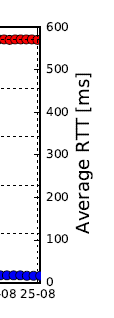Why not just use boolean indexing?
E.g. to find the region that falls between 5 and 10, do "(z >=5) & (z <= 10)":
In [1]: import numpy as np
In [2]: x, y = np.mgrid[-10:10, -10:10]
In [3]: z = np.hypot(x, y)
In [4]: result = (z >= 5) & (z <= 10)
In [5]: result.astype(int)
Out[5]:
array([[0, 0, 0, 0, 0, 0, 0, 0, 0, 0, 1, 0, 0, 0, 0, 0, 0, 0, 0, 0],
[0, 0, 0, 0, 0, 0, 1, 1, 1, 1, 1, 1, 1, 1, 1, 0, 0, 0, 0, 0],
[0, 0, 0, 0, 1, 1, 1, 1, 1, 1, 1, 1, 1, 1, 1, 1, 1, 0, 0, 0],
[0, 0, 0, 1, 1, 1, 1, 1, 1, 1, 1, 1, 1, 1, 1, 1, 1, 1, 0, 0],
[0, 0, 1, 1, 1, 1, 1, 1, 1, 1, 1, 1, 1, 1, 1, 1, 1, 1, 1, 0],
[0, 0, 1, 1, 1, 1, 1, 1, 1, 1, 1, 1, 1, 1, 1, 1, 1, 1, 1, 0],
[0, 1, 1, 1, 1, 1, 1, 1, 0, 0, 0, 0, 0, 1, 1, 1, 1, 1, 1, 1],
[0, 1, 1, 1, 1, 1, 1, 0, 0, 0, 0, 0, 0, 0, 1, 1, 1, 1, 1, 1],
[0, 1, 1, 1, 1, 1, 0, 0, 0, 0, 0, 0, 0, 0, 0, 1, 1, 1, 1, 1],
[0, 1, 1, 1, 1, 1, 0, 0, 0, 0, 0, 0, 0, 0, 0, 1, 1, 1, 1, 1],
[1, 1, 1, 1, 1, 1, 0, 0, 0, 0, 0, 0, 0, 0, 0, 1, 1, 1, 1, 1],
[0, 1, 1, 1, 1, 1, 0, 0, 0, 0, 0, 0, 0, 0, 0, 1, 1, 1, 1, 1],
[0, 1, 1, 1, 1, 1, 0, 0, 0, 0, 0, 0, 0, 0, 0, 1, 1, 1, 1, 1],
[0, 1, 1, 1, 1, 1, 1, 0, 0, 0, 0, 0, 0, 0, 1, 1, 1, 1, 1, 1],
[0, 1, 1, 1, 1, 1, 1, 1, 0, 0, 0, 0, 0, 1, 1, 1, 1, 1, 1, 1],
[0, 0, 1, 1, 1, 1, 1, 1, 1, 1, 1, 1, 1, 1, 1, 1, 1, 1, 1, 0],
[0, 0, 1, 1, 1, 1, 1, 1, 1, 1, 1, 1, 1, 1, 1, 1, 1, 1, 1, 0],
[0, 0, 0, 1, 1, 1, 1, 1, 1, 1, 1, 1, 1, 1, 1, 1, 1, 1, 0, 0],
[0, 0, 0, 0, 1, 1, 1, 1, 1, 1, 1, 1, 1, 1, 1, 1, 1, 0, 0, 0],
[0, 0, 0, 0, 0, 0, 1, 1, 1, 1, 1, 1, 1, 1, 1, 0, 0, 0, 0, 0]])
Cheers,
-Joe
On Thu, Aug 28, 2014 at 8:23 PM, Eric Firing <efiring@...202...> wrote:
On 2014/08/28, 3:02 AM, Matthew Czesarski wrote:
> Hi Matplotlib Users!
>
>
>
> I have some 2-d arrays, which i am displaying with implot, and deriving
> contours for with contour. Easy - I'm just pulling them out of
> collections[0].get_paths() .
>
> However what's not easy is that I would like to recover a 1-0 or
> True-False array of the array values (pixels) that fall within the
> contours. Some line crossing algorithm/floodfill could do it, but I
> guess that matplotlib's fill() or contourf() must do this under the hood
> anyway. I've looked into the output both functions, but I don't see
> anything obvious..
>
> Does anybody know if there's an a way to pull out a such an array from
> matplotlib? Any pointers are appreciated!
Make an array of (x, y) pairs from the X and Y you use in your call to
contour, and then feed that array to the contains_points() method of
your contour Path. This will give you the desired Boolean array for any
given Path; depending on what you want, you might need to combine arrays
for more than one Path.
To get closed paths, I think you will want to use contourf, not contour.
Eric
>
> Cheers,
> Matt
>
>
> ------------------------------------------------------------------------------
> Slashdot TV.
> Video for Nerds. Stuff that matters.
> http://tv.slashdot.org/
>
>
>
> _______________________________________________
> Matplotlib-users mailing list
> Matplotlib-users@lists.sourceforge.net
> matplotlib-users List Signup and Options
>
------------------------------------------------------------------------------
Slashdot TV.
Video for Nerds. Stuff that matters.
http://tv.slashdot.org/
_______________________________________________
Matplotlib-users mailing list
Matplotlib-users@lists.sourceforge.net
matplotlib-users List Signup and Options
------------------------------------------------------------------------------
Slashdot TV.
Video for Nerds. Stuff that matters.
Slashdot: News for nerds, stuff that matters
Matplotlib-users mailing list
Matplotlib-users@lists.sourceforge.net
matplotlib-users List Signup and Options
